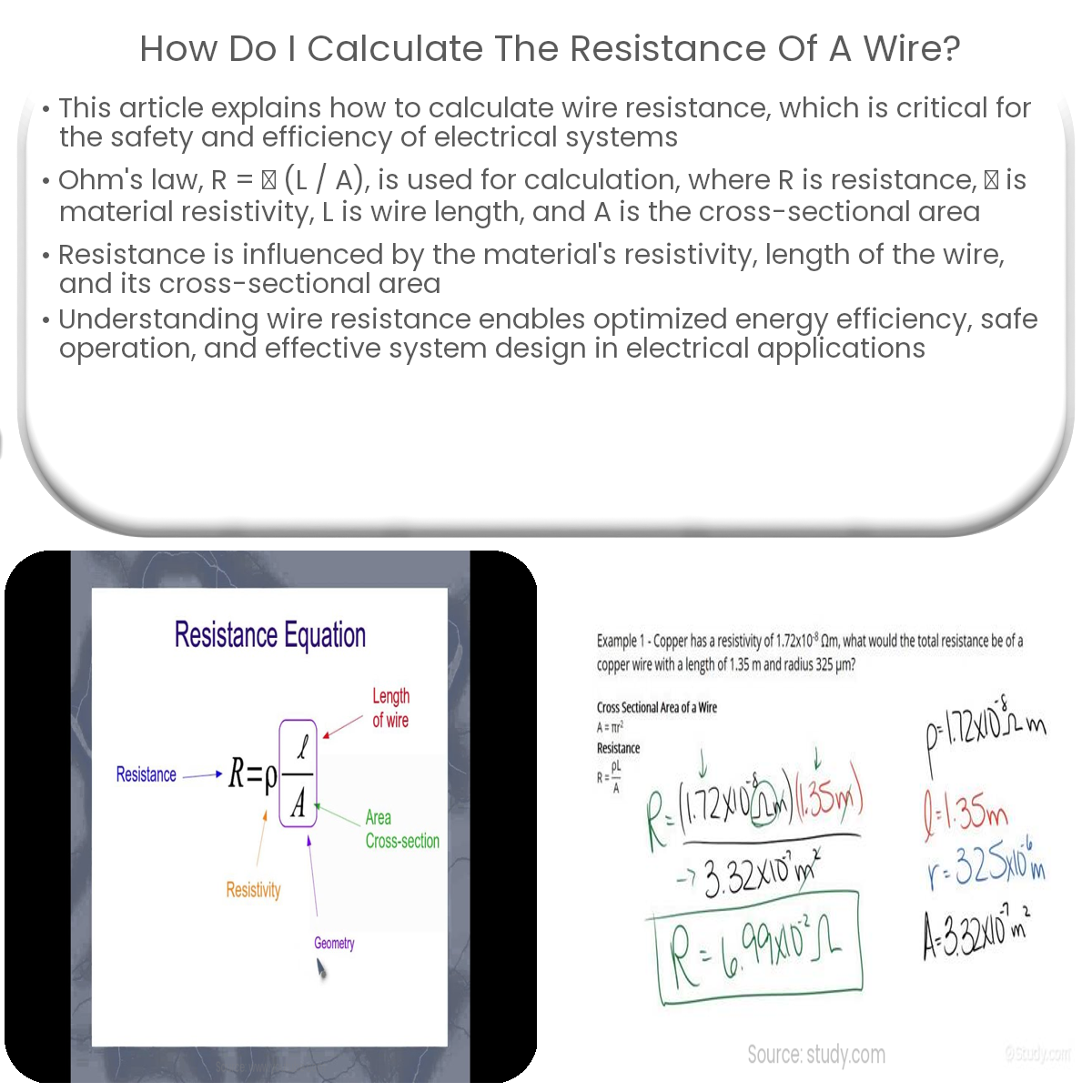To calculate wire resistance, use Ohm’s law formula: R = ρ(L/A), where ρ is resistivity, L is length, and A is the cross-sectional area of the wire.
Calculating the Resistance of a Wire
Resistance is a critical property of wires, influencing the efficiency and safety of electrical systems. This article will explain how to calculate the resistance of a wire, the factors that affect resistance, and the importance of understanding resistance in electrical applications.
Formula for Calculating Wire Resistance
The resistance of a wire can be calculated using Ohm’s law, which states:
R = ρ (L / A)
Where:
- R is the resistance of the wire;
- ρ (rho) is the resistivity of the wire’s material;
- L is the length of the wire; and
- A is the cross-sectional area of the wire.
Steps to Calculate Wire Resistance
- Find the Resistivity: Look up the resistivity (ρ) of the wire’s material in a reference table or textbook. Resistivity values are typically given in ohm-meters (Ωm).
- Measure the Length: Measure the length (L) of the wire using a ruler, tape measure, or other suitable measuring device. Ensure the length is in meters (m).
- Determine the Cross-Sectional Area: Measure the diameter of the wire and use the formula A = π (d / 2)^2, where d is the diameter and A is the area, to calculate the cross-sectional area (A) in square meters (m²).
- Calculate the Resistance: Plug the resistivity (ρ), length (L), and cross-sectional area (A) values into the Ohm’s law formula to calculate the resistance (R) of the wire.
Factors Affecting Wire Resistance
Several factors influence the resistance of a wire:
- Material: Different materials have different resistivities, which directly impact the wire’s resistance.
- Length: Longer wires have higher resistance due to an increased path length for electrons to travel and a higher probability of electron-atom collisions.
- Cross-Sectional Area: Wires with larger cross-sectional areas have lower resistance because they provide more conductive pathways for electrons to flow.
Importance of Calculating Wire Resistance
Understanding wire resistance is crucial for various electrical applications:
- Energy Efficiency: Calculating wire resistance helps minimize energy loss in the form of heat, leading to more efficient electrical systems.
- Safety: Knowing the resistance of a wire aids in selecting appropriate wire sizes and materials, ensuring safe operation and minimizing the risk of electrical fires.
- System Design: Accurate resistance calculations enable optimal system designs, balancing energy efficiency and safety.
In conclusion, calculating the resistance of a wire is essential for efficient and safe electrical systems. By understanding the factors that affect resistance and using Ohm’s law, you can make informed decisions regarding wire selection and system design.


